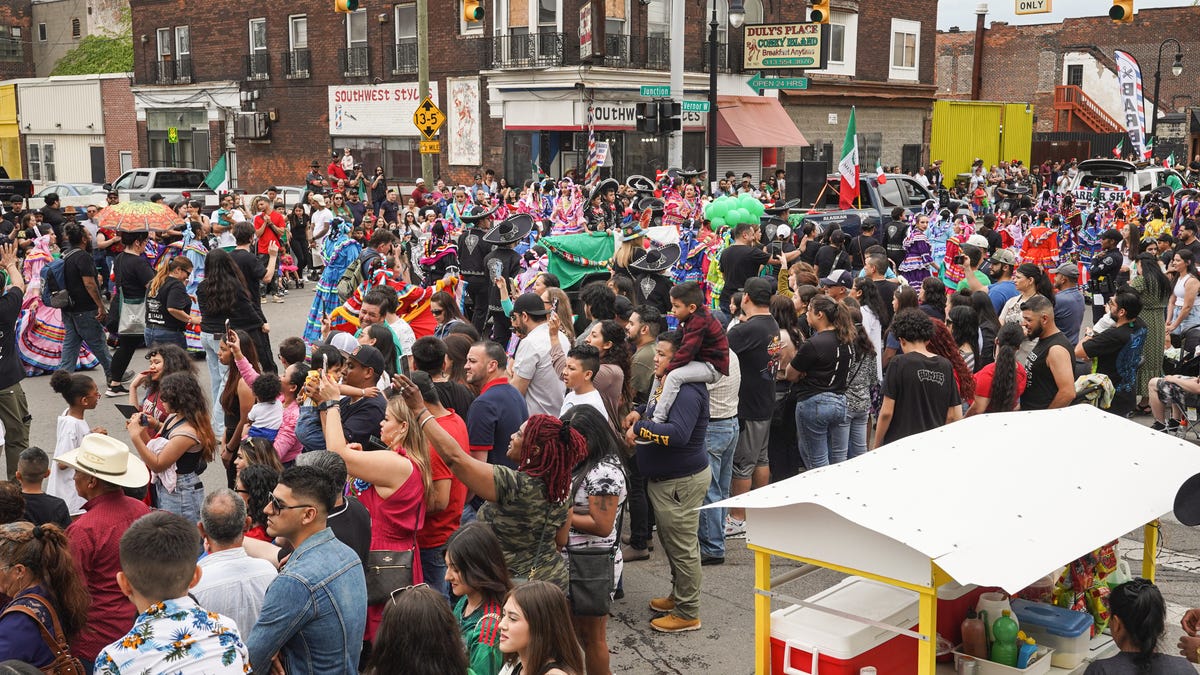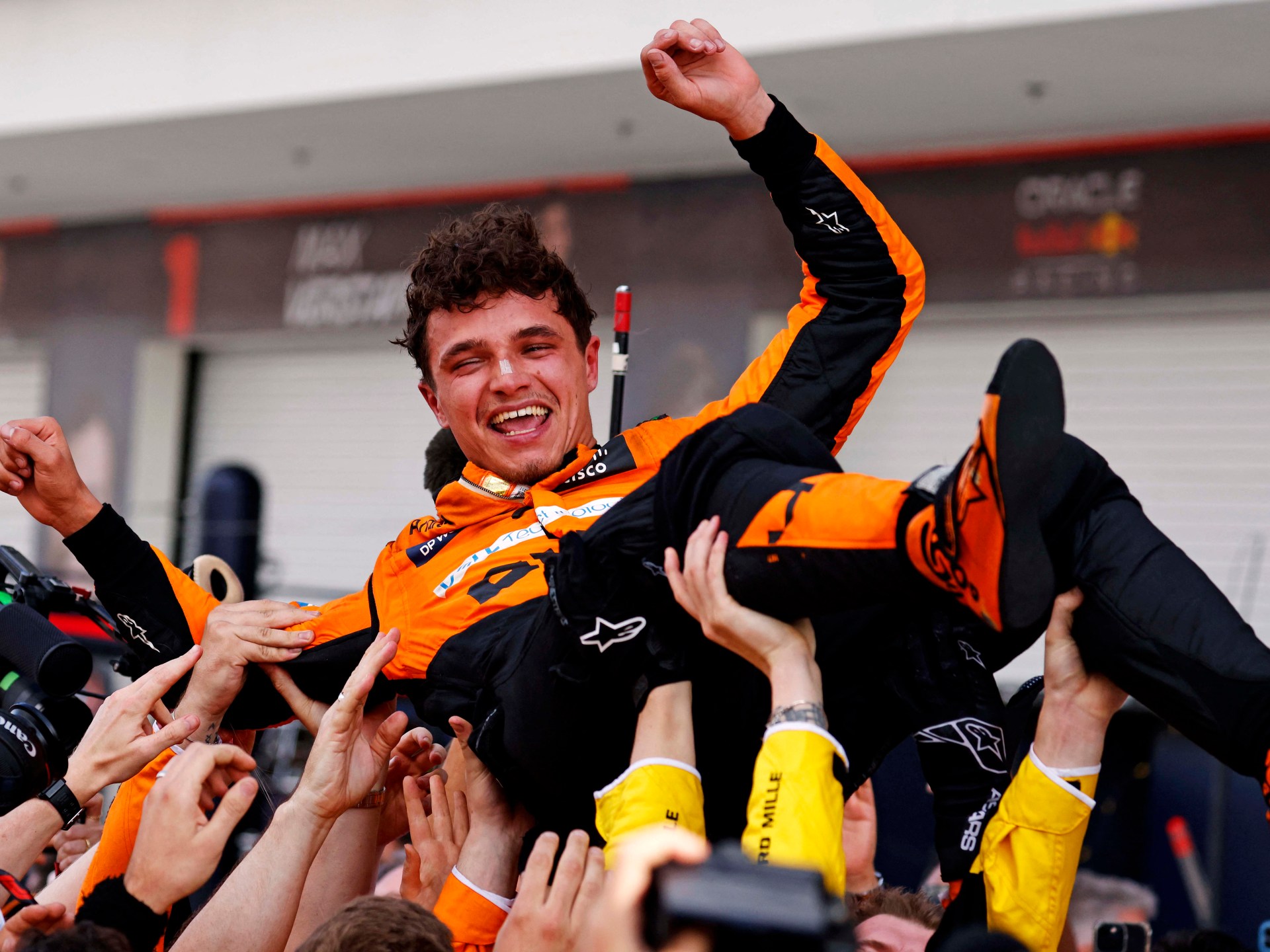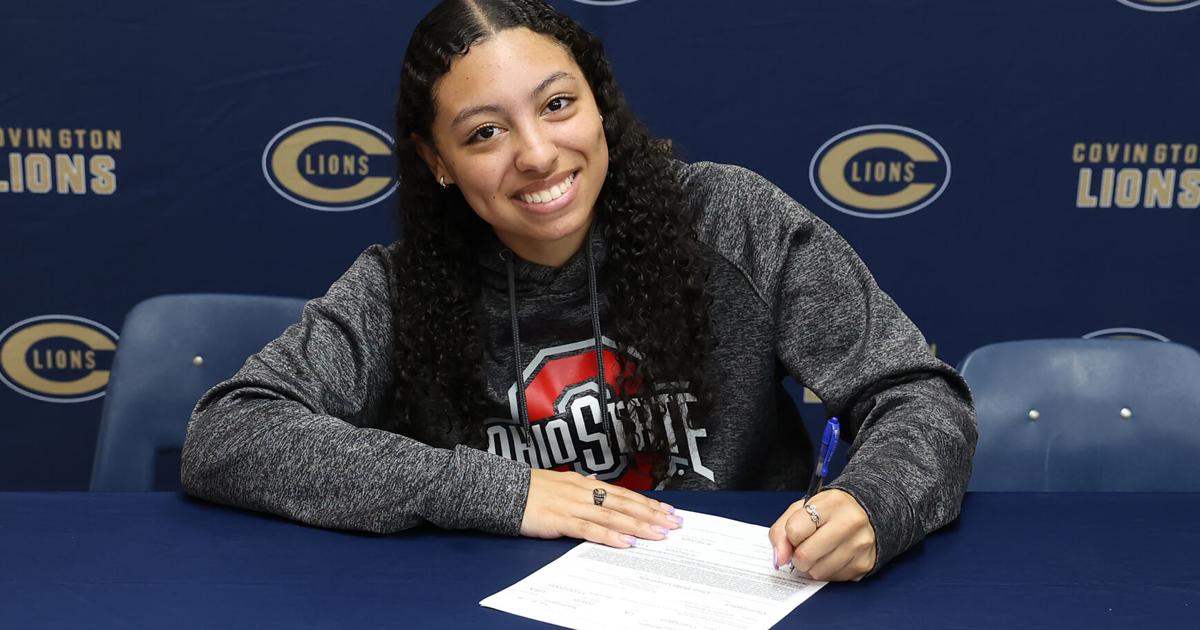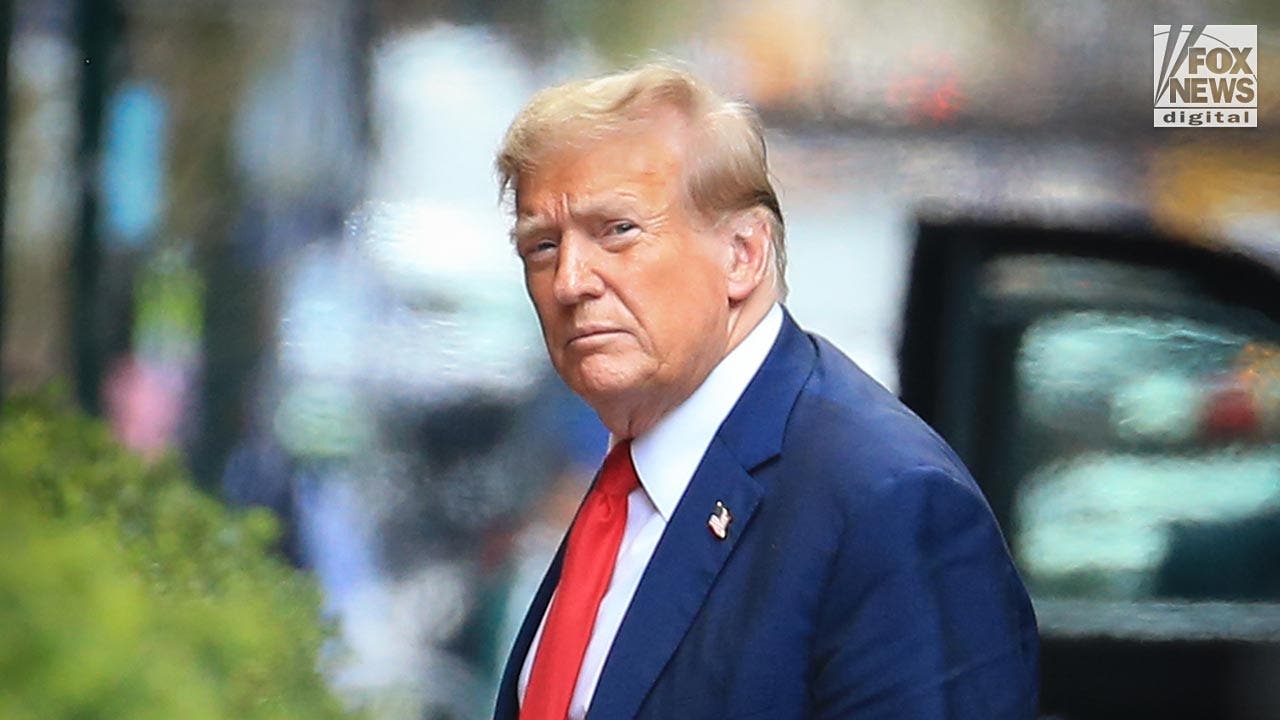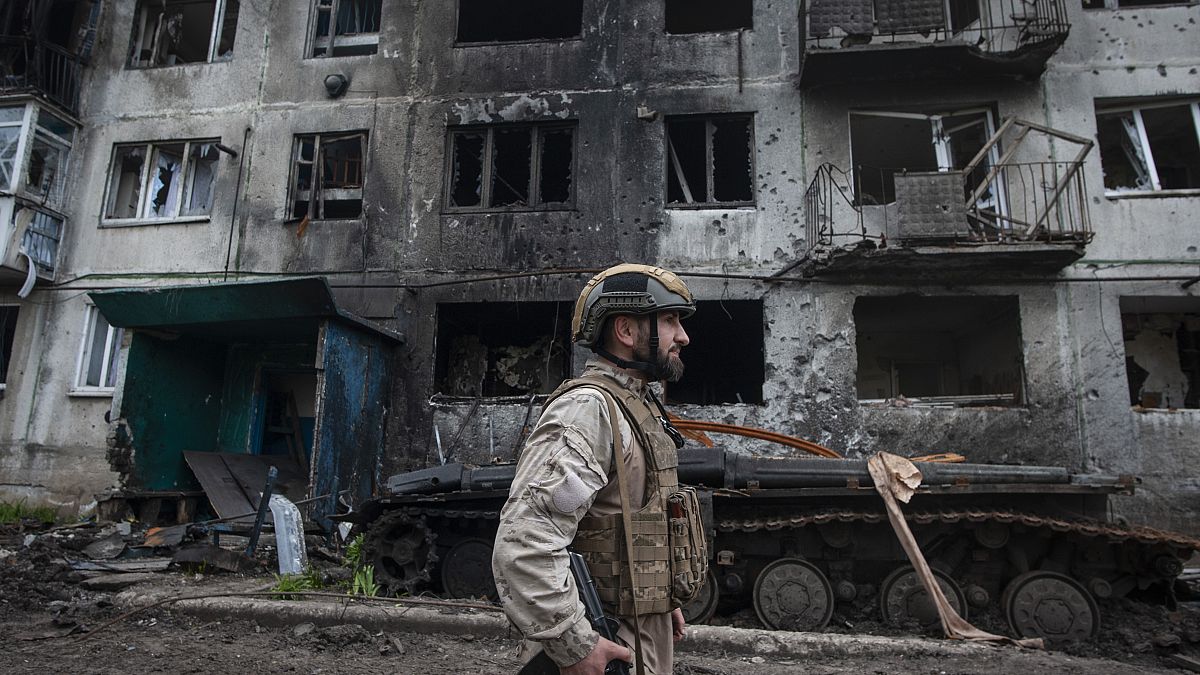Indianapolis, IN
Less than 100 days to the Indy 500, ticket sales are nearly dead-even with 2016 sellout
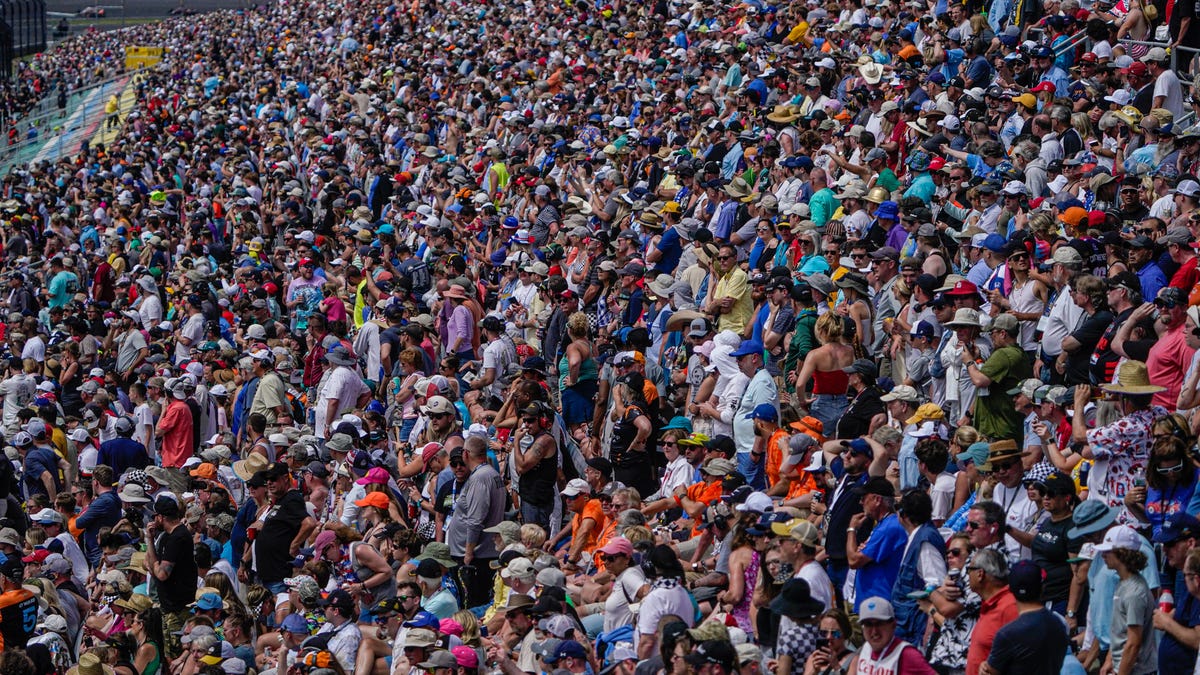
Watch ‘More Than a Race,’ our mini-documentary on the Indy 500
Indianapolis is the 500.
A.J. Foyt once said, “If it wasn’t for the Indianapolis 500, none of you would’ve ever heard of me.” The same might be said of Indianapolis.
Jenna Watson, Indianapolis Star
It’s not the 100th running, nor is it fans’ full-fledged return following a pandemic – and Doug Boles doesn’t believe the ‘Kyle Larson effect’ has really set-in. Yet every day, the president of the Indianapolis Motor Speedway wakes up to daily ticket sales reports and sees the 108th running of the Indianapolis 500 tracking nearly dead-even with the Greatest Spectacle in Racing’s most recent sellout eight years ago.
The 500 seems to be converting more and more casual fans into lifelong race attendees, pushing the race closer to the 350,000-fan sellout for its 100th running.
“Since the sellout in 2016, I think people are more apt to renew early, just to make sure they have their seats, and people are getting trained that way,” Boles told IndyStar in a 1-on-1 interview last week. “So when you see tickets go up in the renewal period, as they have every year (since 2016), you think, ‘Okay, good we’ve trained more people.’
“But now, what’s happened is over time, literally day after day after day, when we look at the ticket numbers, it’s more tickets sold today, 93 days out, than it was last year 93 days out, and we’re still tracking almost dead-even with 2016, which is crazy.”
Insider: Tracking IMS’s consistent growth in Indy 500 ticket sales
Boles said the Racing Capital of the World hosted more than 330,000 fans last year, the most since 2016 and falling less than 10,000 tickets short of a sellout of its grandstands that hold roughly 234,000 seats. The key in 2016 was the sellout of the track’s grandstand seats May 6, still more than three weeks to race day, which then led to a run on general admission access to the infield.
By May 25, IMS announced it was no longer selling tickets, leading to the lift of the local blackout for the first time in 65 years.
A year ago, IMS saw roughly a 1% uptick in ticket sales, moving from 12,000 unsold grandstand seats to 9,000 (and 325,000 to 330,000 race day attendees). It will still need to see an improvement year-over-year to reach that grandstand sellout mark with enough time for fans to feel a scarcity in infield admission that led to 2016’s sellout.
“For a period of time there, we were slightly ahead (of 2016 sales), and now we’re slightly behind, but without that 100th-running conversation to drive it, it’s amazing it’s that strong,” Boles said. “I keep wondering if I’m going to wake up one day and realize, ‘Oh, everyone’s bought and set now.’ But it just continues to go.”
Along with edge-of-your-seat finishes the last three years in eventual victories from four-time champion Helio Castroneves and first-timers Marcus Ericsson and Josef Newgarden, Boles attributes the upward trajectory of tickets sales to track owner Roger Penske’s continued investment into the track that presently stands around $50 million just over four years since he completed the purchase of IMS and the IndyCar series from the Hulman-George family.
Indy 500 rule change: Newgarden’s winning move made illegal. How it’ll be officiated is unclear.
Renovations like new video monitors for those in the front stretch grandstands, several larger boards in the infield and high-end touch-ups from revamped bathrooms to coats of paint and paved walkways all across the venue’s nearly 1,000 acres weren’t initially meant to drive revenue, but Boles said IMS’ collective facelift has helped show customers on the fence just how much the track’s new ownership cares about their experience.
“We went through a period of time where we replaced or repaired something if it was broken, but since Roger purchased the Speedway, he’s allowed us to get ahead of things, and so as a fan, I think you feel better about what you see,” Boles said. “’Okay, we’ve got ownership who’s investing alongside us.’”
From 2023: Roger Penske’s IMS investment nearing $50 million. Here’s what’s new.
Beyond the grandstands, Boles says the track’s Snake Pit ticket sales are “crazy again,” tracking towards the pre-pandemic highs of more than 25,000. And in the infield on race day, he expects to see hordes of short-track racing T-shirts of fans there to watch famed rookie Kyle Larson’s debut as he registers the first attempt of ‘The Double’ in 10 years. Fans who want to see the 2021 NASCAR Cup champion’s first 500 miles of what could be an 1,100-mile day along with the Coke 600 that evening at Charlotte Motor Speedway could help give IMS the late boost it needs to seriously flirt with a sellout.
“I certainly think Kyle Larson will play into it, especially in the next three months. I think fans who may not regularly buy tickets to the 500, whether they’re NASCAR fans or short track fans, I think we’ll see a lot of that as we get closer,” Boles said. “There may have been a little impact, but I don’t think if we drilled down into it, we’ve even seen the ‘Kyle Larson effect’ yet.”

Indianapolis, IN
How Indy's negotiations with Keystone Group broke down – Inside INdiana Business

Loading audio file, please wait.
To hear city officials tell it, the decision to walk away from the Eleven Park development planned for the west side of downtown was in the best interest of taxpayers.
But from the perspective of Keystone Group—whose owner, Ersal Ozdemir, has committed some $26 million and used nearly every bit of political will that he can muster to get the $1.5 billion project off the ground—the move was driven by misplaced ambitions and a lack of interest in discussing specifics of the project’s finances.
Indianapolis Mayor Joe Hogsett said last week the city would pursue a bid to join Major League Soccer, following a meeting with the league’s commissioner, Don Garber, in New York.
That move came one month after the city quietly ended its negotiations on March 26 with Keystone on the Eleven Park project on the former Diamond Chain Manufacturing Co. site, where excavation is underway to clear historic artifacts and remains from its use as a cemetery more than a century ago.
The move also seemed to usurp an effort to land an MLS team that Ozdemir and his confidants have long said was the ultimate goal of a new stadium for the Indy Eleven franchise, even if it meant he wasn’t the majority owner in such an endeavor.
For Ozdemir, the blow affects more than soccer. It imperils the larger Eleven Park district he was planning to build around a stadium.
“This transformational mixed-use development is set to transform the riverfront and connect the southside and westside to downtown Indianapolis,” he told IBJ. “Eleven Park’s development brings revitalization to an underutilized area of Indianapolis and creates a complete live-work-play-stay village wanted by the community.”
Financing concerns
In putting the kibosh on talks with Keystone, city officials have said the project had a funding gap that would have put the public on the hook for large portions of the mixed-use development.
Aliya Wishner, chief communications director for the Hogsett administration, said the Eleven Park project posed “a serious risk to Indianapolis taxpayers” because the city believed the company didn’t have the money to pay for parts of the project that were to be privately financed.
Wishner said concerns about Keystone’s proposal festered as city leaders started negotiations on the Eleven Park project in December after securing legislative approvals for a professional sports development area map that would be used to capture tax revenue within a mile of Eleven Park to pay for a large portion of the planned $250 million Indy Eleven stadium.
By the end of March, the city had determined that Keystone’s proposal “would never work financially for Indianapolis taxpayers,” Wishner said in emailed responses to questions from IBJ. “There was a funding gap of many millions of dollars per year that increased depending on [public] funding scenarios.”
The city has so far declined to share details about its concerns—including the specific amount that would have to be bridged to make the project viable. And the Mayor’s Office took steps to ensure that Democrats on the City-County Council didn’t talk as a group with Ozdemir and Keystone about the financing plan in advance of Hogsett’s announcement about the MLS effort.
Ozdemir told IBJ his plan would have ensured Eleven Park was “built in a fiscally responsible way and does not call for any new taxes or appropriations from city or state governments.”
But an application for tax-increment-financing incentives the company submitted to the city in February, which IBJ obtained, shows the company was requesting as much as $243 million to support construction of three public parking garages with a total of 4,000 spaces. That money would come from property tax revenue captured within the TIF district.
Wishner said the city’s concerns “grew considerably” with the submission of that request, which would come on top of state and local tax revenue that would be used to pay off bonds for stadium construction.
Keystone officials characterized the $243 million figure as a maximum—and one they said would likely be reduced during negotiations with the city.
But instead of focusing on that figure, Keystone officials said, the city provided a list of four concerns it wanted the company to address before continuing talks. According to Keystone:
◗ The city wanted to bid the stadium portion of the project publicly—rather than have Keystone build the facility, then transfer it to city ownership. Keystone would still be responsible for developing the private portions of Eleven Park.
◗ It wanted detailed information about how Ozdemir planned to pay for its required 20% of stadium construction.
◗ It also said Keystone would be required to use developer-backed bonds for a tax-increment-financing district for the project. That is common practice for the city, but Keystone had requested that the bonds be backed by revenue from the city’s downtown TIF district and receive other credit enhancements to keep interest rates lower and entice bond buyers.
◗ The city said it would require Keystone to whip up the City-County Council votes needed to approve the incentives, a duty that is typically carried out by the administration itself.
Keystone officials said the company was able to directly address each concern and agree to the city’s terms. They then asked for a meeting to discuss the project in more detail, including financial terms and the company’s interest in securing a deal in the next few months.
But two days after Keystone agreed to the city’s terms, company officials said, the Hogsett administration said it was walking away from the negotiations unless the developer could guarantee it could land an MLS franchise—something Ozdemir was interested in pursuing but had no way to guarantee. Keystone officials said that was the first time the city said an MLS commitment was necessary for building a stadium.
Wishner, the Hogsett spokeswoman, said Keystone had not “adequately addressed” the city’s terms. And city officials told Ozdemir and others then that it had plans for a new stadium at a different site—and with a different ownership group.
Already, Tom Glick, a longtime professional soccer executive who first met with the Hogsett team in January, had met three times with Keystone to discuss the potential ownership group for a Major League Soccer franchise. Keystone officials took Glick on a tour of the Eleven Park site in January and explained more about the company’s investments in the project so far. Keystone officials told IBJ the company and Ozdemir have already invested more than $26 million in the project.
But they said Glick was unwilling to share details about the investment group or its plans, making real negotiations about ownership all but impossible. In all, Keystone met with Glick four times over the span of four months, including on April 11.
Keystone officials said Ozdemir is open to joining the ownership group, even with a minority stake, and has asked to meet with other owners directly to discuss their involvement. So far, they said, Glick has declined to set up those talks.
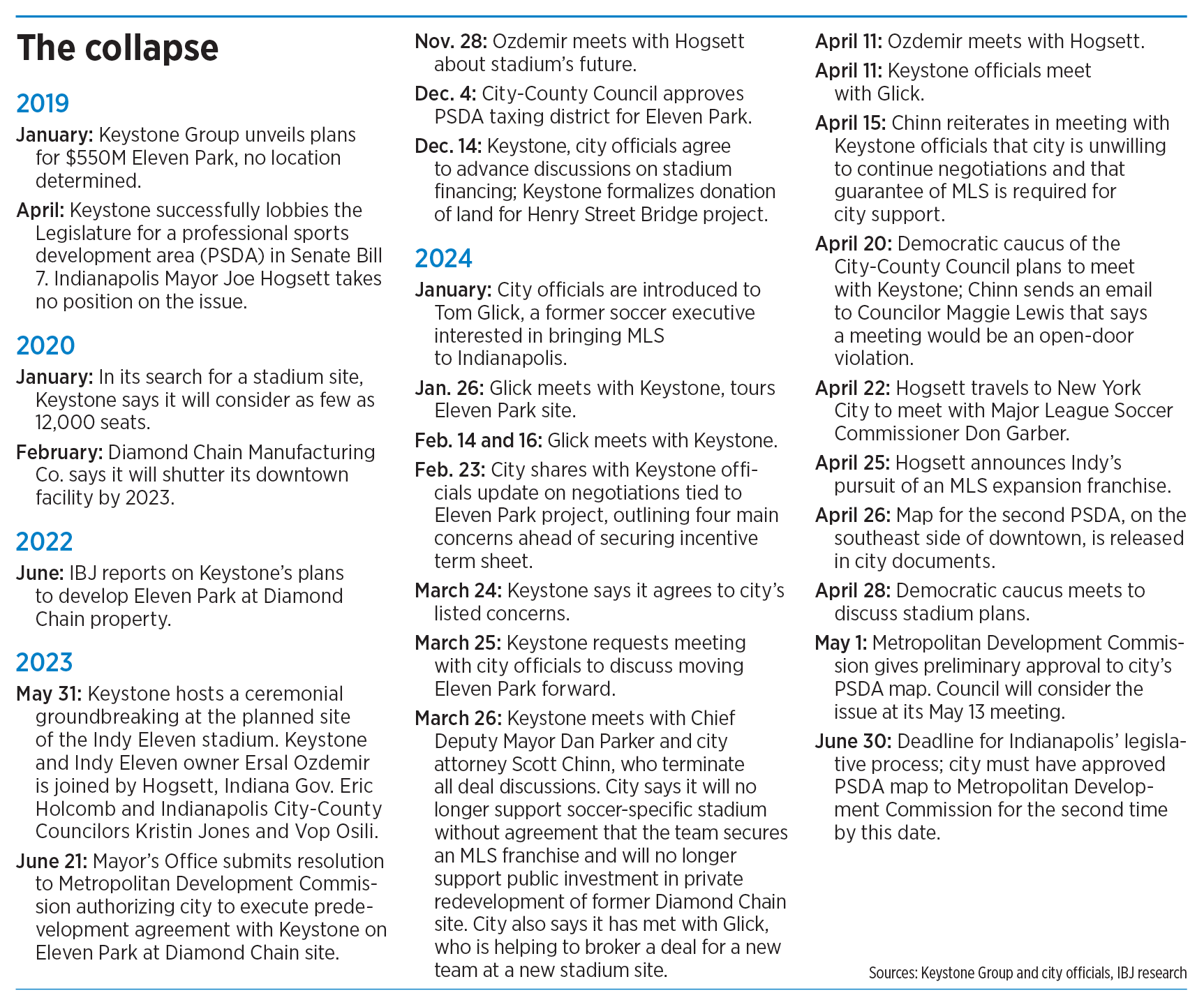
A specific site
As part of Ozdemir’s efforts to develop Eleven Park, the City-County Council last fall established the professional sports development area that would generate tax revenue to pay for much of the stadium’s construction. But Keystone officials say the Hogsett administration has never submitted the PSDA paperwork to the state, which is necessary to make it official.
“Unfortunately, after years of good-faith negotiations and recent bipartisan approvals from the City-County Council, Mayor Joe Hogsett’s administration is preparing to walk away from the state and city leaders who entrusted him with this project and the neighborhoods who are depending on the progress Eleven Park represents,” Keystone said in a statement it released just hours before Hogsett’s announcement that the city would try to land an MLS team with a different ownership group.
“These actions by Mayor Hogsett’s administration are a concerning departure from what the Indianapolis business community stands for: integrity, trust, and the expectation that one is true to their word,” the statement said. “A dangerous precedent is being set for how city negotiators conduct themselves.”
Hogsett said during last week’s announcement that the city would begin work to create a professional sports development area that could be used for a stadium development at 355 E. Pearl St., next to the Indianapolis Downtown heliport. On Wednesday, the city’s Metropolitan Development Commission voted 7-1 to advance the mayor’s new PSDA map to the City-County Council for consideration.
Even so, city officials said the former Diamond Chain site could still be an option.
But the new ownership group could be hard-pressed to secure that site without bringing Ozdemir into the project, as Keystone owns the property through a holding company. The city doesn’t own it and doesn’t have options to buy it or any other legal ability to use it.
Ultimately, the city can only submit one PSDA to the State Budget Committee, which has authority over the taxing district. City officials said the site decision will be made by the ownership group following the city’s legislative process, which includes necessary approvals from the Metropolitan Development Committee and the Indianapolis City-County Council. But multiple sources told IBJ the preferred site is the heliport.
And a Keystone official, speaking on condition of anonymity, said the company believes the city and incoming owners have “already decided and made clear, that if this alternative map gets passed, the Diamond Chain site goes away, the Indy Eleven goes away.”
City officials have denied that the heliport site is being given top billing over the Diamond Chain location, indicating they view both as strong options.
The heliport site, though, has already been controversial. It is controlled by the Indianapolis Airport Authority, which has sought to decommission it. The city has the first option to develop the site if that happens, which IBJ reported last year.
Chuck Surack, founder of Fort Wayne-based Sweetwater Sound and the owner of Sweet Helicopters and other companies that use the heliport, is among several business leaders who oppose the effort to close the heliport and use the land for development.
And Surack is frustrated by what he sees as unfair dealings with Keystone Group. “I’d like to think that, when you’re dealing with politicians, their word you can count on,” Surack said of the city’s approach. “And at least from everything I’m seeing, it looks pretty political right now and not real honest.”
Surack said he plans to maintain ownership of a 10-story building he acquired directly east of the heliport as a “strategic move.” He said he could use property to develop a helistop—an area where helicopters can land but cannot be stored for long periods—if the airport authority moves forward with decommissioning the heliport.
The helistop concept is “not ideal,” he said, but “I bought it because it was available and I thought, to be real frank, that it might prevent the heliport from being torn down, so it was a little bit strategic.”
Surack said he’d be willing to develop the site if the heliport stays put. “But right now,” he said, “it’s just kind of marking place for me.”
Another property owner near the heliport, Lena Hackett, told IBJ she received a written offer last week from an undisclosed buyer represented by the Indianapolis office of Cushman & Wakefield for her 0.3-acre parcel at 10 S. New Jersey St., just south of Maryland Street.
She declined to disclose the offer amount but said she turned it down.
“I’m not interested in selling my building,” she told IBJ. “And I am not interested in being any part of whatever is going on.”
Political problems?
This week, the Democratic caucus of the City-County Council issued a statement indicating its members have “more questions than answers” about the Hogsett administration’s MLS plans. The caucus said its members are eager to learn more before acting on the new PSDA proposal.
Sources said many councilors in the 19-member caucus haven’t been given details about the project and have concerns about how Ozdemir will be treated in the deal.
“Pursuing a Major League Soccer team could strengthen our city’s reputation, enhance tourism, and boost our economy,” the statement said. “Currently, we believe there is more work to do to understand the repercussions of this strategy.”
Among the most vocal has been Councilor Kristin Jones, who represents District 18, where both proposed sites are located. Following the MDC’s vote on Wednesday, Jones indicated that the Hogsett administration might face an uphill battle in finding a council sponsor—and eventually council support—for the new PSDA proposal.
When asked who would sponsor the proposal at an upcoming council meeting, Jones said she did not know of a member who would be willing to sponsor it. Sponsorship by a council member is required for a proposal to be considered.
Jones said that typically the councilor who represents the district where the project is located is the one to sponsor the proposal. “And I am telling you,” she said, “I am not sponsoring this proposal. So they will need to look for a different author.”
She said her constituents “want Eleven Park to be built as planned, regardless of which jerseys are worn on that field.”
For its part, the city has said it has discussed the effort with multiple council leaders. “The mayor’s representatives not only had discussions with council leadership, but also individual councilors, leading up to the mayor’s announcement on the opportunity for the city to pursue a Major League Soccer expansion club and the importance of creating a new PSDA map,” Wishner said.
“We are still in the early stages of this extensive process and look forward to continuing our conversations with councilors on this exciting opportunity to bring the major league of the world’s game to Indianapolis,” she said in a written statement.
The city sent a letter on April 20—two days before Hogsett’s meeting with Garber—discouraging councilors from speaking with Keystone about its project during a caucus meeting. The city cited the state’s Open Door Law—which generally prevents a majority of council members from meeting privately—among other issues.
“What seems to be occurring … here is a developer skipping ahead in the process to get the formal attention of the Democratic Caucus in order to influence the outcome of arrangements that are not yet ripe,” reads a portion of the letter, a copy of which IBJ obtained.
The letter, authored by Feagre Drinker attorney Scott Chinn, who is representing the city on the MLS deal, also suggests that the caucus be wary of conversations with Keystone “until there are more definite proposals to discuss.”
The City-County Council is set to consider the new PSDA map on May 13, as the city stares down the June 30 deadline to complete its legislative processes.
Story Continues Below
Indianapolis, IN
DiversiFind Helps Minority-Owned Suppliers
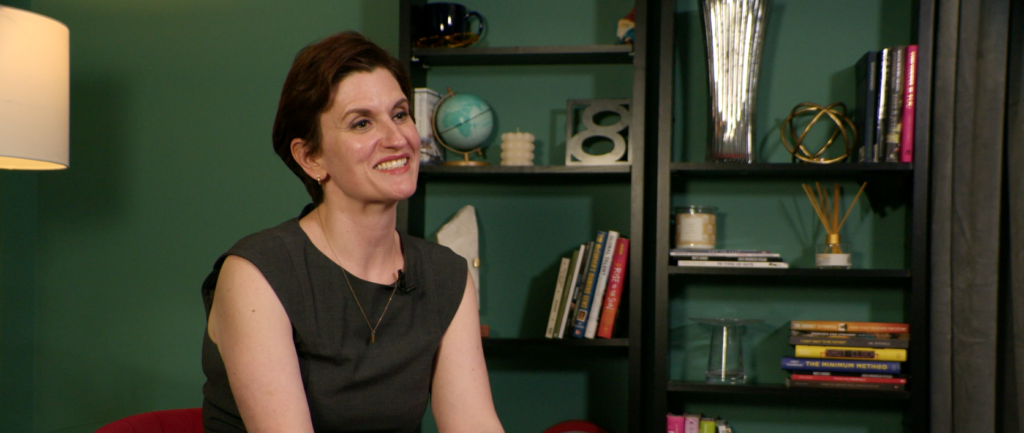
A new company is working to connect minority-owned suppliers with companies looking to hire.
Lesley Crane, the co-founder of DiversiFind, says her company is an online platform that minority-owned suppliers can use to market themselves to large companies. She says many companies don’t have the budget to market to larger companies independently, and DiversiFind solves that problem.
Crane created the company when she was consulting and noticed many minority-owned suppliers running into a brick wall when looking for new business. “There has to be a better way,” she thought. Focusing on bringing tech to the forefront to solve the problem, Crane says she spent lots of time interviewing clients to find their needs and pain points.
While focusing on being a one-stop diversity shop, Crane wants DiveriFind to continue improving its data collection abilities. The ultimate goal, she says, is to create an environment that erases inequity in the supplier field.
Indianapolis, IN
NFL analyst raves over Colts' late-round draft pick | Sporting News
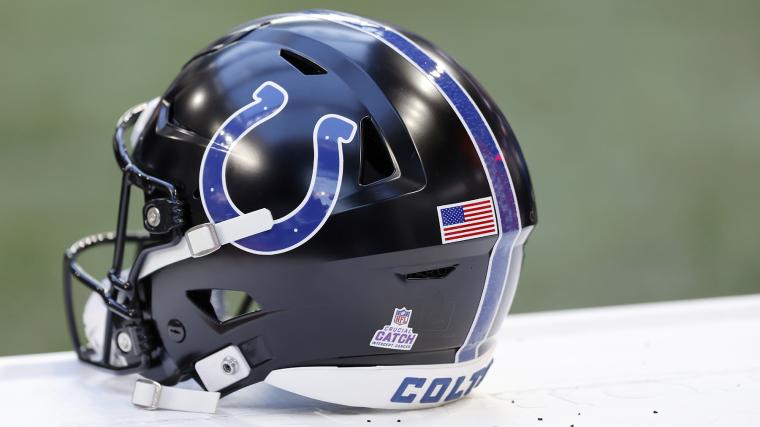
The Indianapolis Colts were busy on the final day of the 2024 NFL Draft, and one of their selections came in the form of Oregon State wide receiver Anthony Gould.
Taken in the fifth round (No. 142 overall) with a selection the Colts received in a trade with the Carolina Panthers, Gould should compete for a depth spot in the wide receiver room.
While it might be difficult to carve out a significant role on offense, Gould’s biggest impact will come on special teams. This is especially true when considering the new kickoff rules that will emphasize a player’s return skills.
Reggie Wayne had hilarious reaction to Colts drafting Anthony Gould
In looking at the best sleeper pick for each team, Touchdown Wire’s Doug Farrar was a big fan of the Colts’ selection of Gould.
The Colts were pretty set at receiver from a B-level to D-level perspective before the 2024 draft, and they upped the ante with Texas’ Adonai Mitchell in the second round. But don’t overlook the selection of Oregon State receiver Anthony Gould with the 142nd overall pick in the fifth round. At 5′ 8⅜” and 174 pounds, Gould tested very well at the scouting combine, and that all shows up on tape. Gould will be a slot guy at the next level, and he’ll amplify his place in the position with some nasty foot fakes at the line, and impressive vertical speed. And while he has some juice as a return man, General Manager Chris Ballard sees him as more than just that.
Last season, Gould caught 44 passes on 70 targets for 711 yards and two touchdowns. Were he a bit bigger, and had he played in the SEC, we might be talking about a third-round pick here.
The depth chart for the Colts wide receiver room is a pretty deep one, especially with the addition of second-round pick Adonai Mitchell. That’s not to say Gould can’t break through, but it’s more likely he contributes mostly on special teams during his rookie season.
Gould brings a lot of juice from an athleticism perspective, and he’s likely to make a major impact on special teams as a return man to begin his career.
For more Colts coverage, check out Kevin Hickey’s work on Sporting News.
-

 Politics1 week ago
Politics1 week agoColumbia University’s policy-making senate votes for resolution calling to investigate school’s leadership
-

 News1 week ago
News1 week agoBoth sides prepare as Florida's six-week abortion ban is set to take effect Wednesday
-

 World1 week ago
World1 week agoBrussels, my love? MEPs check out of Strasbourg after 5 eventful years
-

 Politics1 week ago
Politics1 week agoHouse Republicans brace for spring legislative sprint with one less GOP vote
-

 News1 week ago
News1 week agoPro-Palestinian campus protesters face looming deadlines and risk of arrest
-

 Politics1 week ago
Politics1 week agoRepublican makes major announcement in push to grow GOP support from once-solid Dem voting bloc
-

 Politics1 week ago
Politics1 week agoGOP Rep. Bill Posey won't seek re-election, endorses former Florida Senate President as replacement
-

 World1 week ago
World1 week agoAt least four dead in US after dozens of tornadoes rip through Oklahoma

